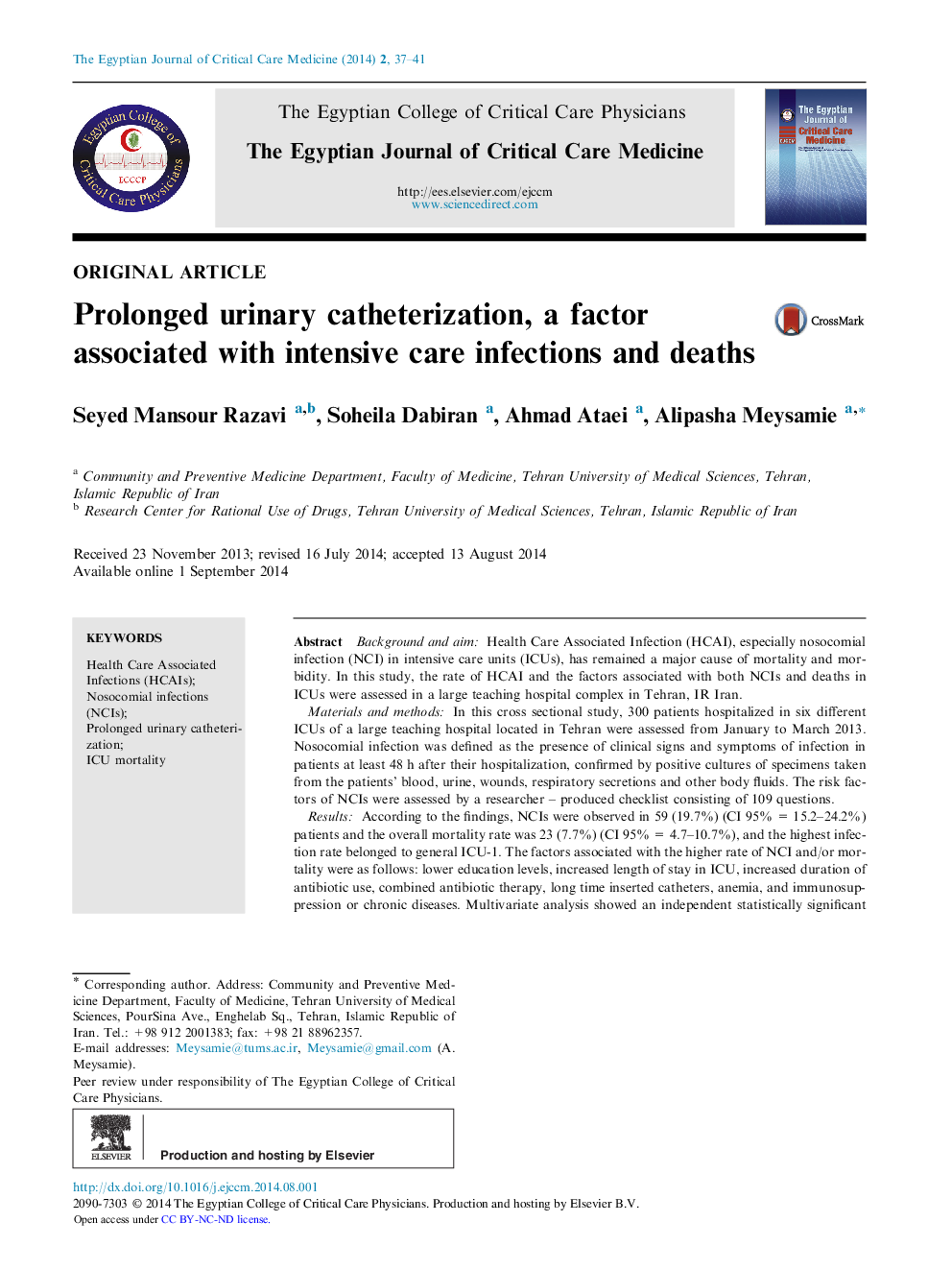| Article ID | Journal | Published Year | Pages | File Type |
|---|---|---|---|---|
| 2910897 | The Egyptian Journal of Critical Care Medicine | 2014 | 5 Pages |
Background and aimHealth Care Associated Infection (HCAI), especially nosocomial infection (NCI) in intensive care units (ICUs), has remained a major cause of mortality and morbidity. In this study, the rate of HCAI and the factors associated with both NCIs and deaths in ICUs were assessed in a large teaching hospital complex in Tehran, IR Iran.Materials and methodsIn this cross sectional study, 300 patients hospitalized in six different ICUs of a large teaching hospital located in Tehran were assessed from January to March 2013. Nosocomial infection was defined as the presence of clinical signs and symptoms of infection in patients at least 48 h after their hospitalization, confirmed by positive cultures of specimens taken from the patients’ blood, urine, wounds, respiratory secretions and other body fluids. The risk factors of NCIs were assessed by a researcher – produced checklist consisting of 109 questions.ResultsAccording to the findings, NCIs were observed in 59 (19.7%) (CI 95% = 15.2–24.2%) patients and the overall mortality rate was 23 (7.7%) (CI 95% = 4.7–10.7%), and the highest infection rate belonged to general ICU-1. The factors associated with the higher rate of NCI and/or mortality were as follows: lower education levels, increased length of stay in ICU, increased duration of antibiotic use, combined antibiotic therapy, long time inserted catheters, anemia, and immunosuppression or chronic diseases. Multivariate analysis showed an independent statistically significant association between prolonged urinary catheterization and both NCIs and deaths.ConclusionIt seems that patients with prolonged catheterization are prone to NCIs and deaths, so they should be treated intensively.
